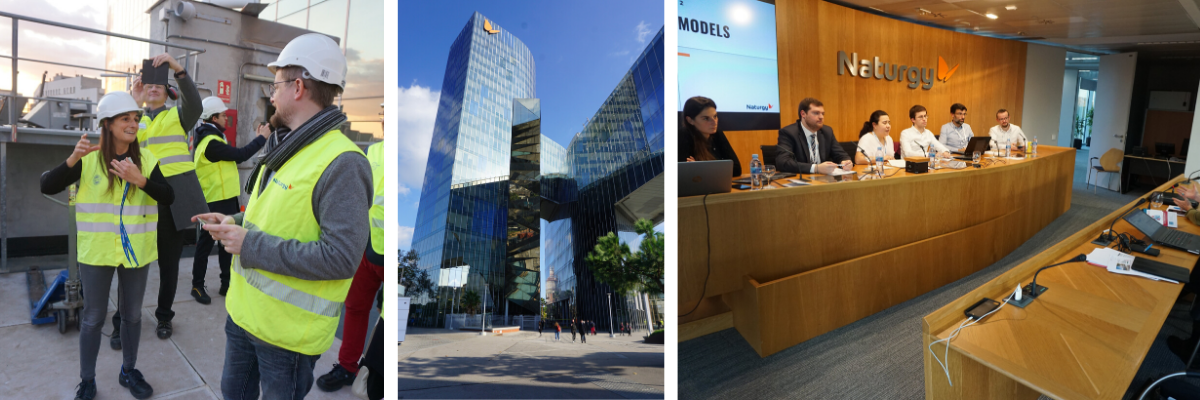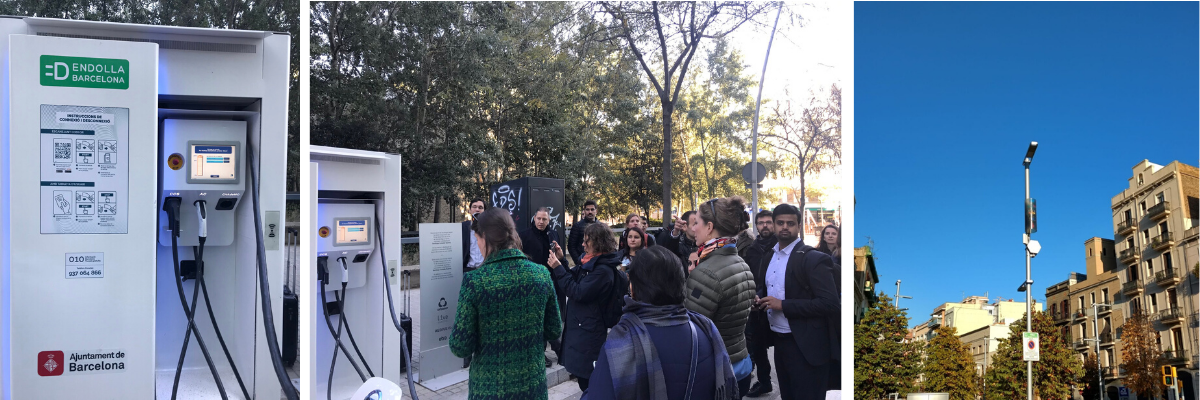The solutions developed in GrowSmarter have made Barcelona smarter and more sustainable, and they have the potential to do the same for Europe. Here in Barcelona, the GrowSmarter team is sure of this and have spent the final months of the project sharing that knowledge with the world. Our solutions on Low Energy Districts, Integrated Infrastructures and Sustainable Urban Mobility are fully implemented and validated, so we were able to bring the solutions and the lessons learnt to a number of high level events.
Most recently (on December 12, 2019), we arranged a session at COP25 in Madrid showcasing how urban innovation can play a role in fighting climate change and fulfil the 2030 Agenda. At the session, Barcelona’s Commissioner for the 2030 Agenda, Miquel Rodriguez Planas, participated together with GrowSmarter’s project manager Lisa Enarsson (Stockholm) and Miguel Á. García from the European project Remourban. It was led by our partners from Anteverti led by Ana Alcantud.
They discussed the importance of building partnerships between different stakeholders when taking large scale action like what we have done in GrowSmarter. And they agreed that large scale action must be taken to fight climate change!
After the session on how innovative urban technologies can fight climate change, a group of political representatives took the stage to confirm their commitment to sustainable urban development. The Deputy Mayor of Barcelona, Ms. Laia Bonet, was joined by Mr. Oscar Puente Santiago, Mayor of the City of Valladolid, Ms. Ana Oregi, Deputy Major of City of Vitoria-Gasteiz and Mr. Mohammed Boudra, President of United Cities and Local Governments (UCLG), all agreed that urban areas are important centres of action in the fight against climate change.
This kind of high level commitment is a great promise to the future of smart city solutions, and the solutions we have implemented in Barcelona. Measures such as our distribution of freight in the inner city using e-cargobikes (reducing Co2 emissions related to freight delivery by 96%) and our work with local renewable energy generation, are ready to be upscaled and replicated throughout Europe.
Focusing on Low Energy Districts in Barcelona
An important part of the work we have done in Barcelona has been centred on the creation and evaluation of Low Energy Districts. Our partners, led by Naturgy and Catalonia’s Institute for Energy Research (IREC), have worked hard to complete energy efficient refurbishments of old cultural heritage buildings, public housing, private housing and in in different types of privately owned recreational buildings.
On November 18th, the day before the Smart City Expo World Congress started, we therefore invited participants to a day presenting all the work we have to implement energy efficient refurbishments in GrowSmarter. We presented the main conclusions of GrowSmarter’s work with Energy refurbishment and had a chance to showcase the large solar pagoda currently supplying almost 5 percent of the energy consumption at the 20-storey building skyscraper Mare Nostrum Tower.

The day after, during the Smart City Expo World Congress, we momentarily stepped away from the congress at Fira Barcelona to show more smart solutions to interested congress-goers. We had an opportunity to see our e-charging infrastructure – set up by our partner Endesa – and the Smart Towers deployed by Cellnex which turn normal street lights into small urban telecom sites helping to connect the City of Barcelona.
To learn more about all the solutions, we have implemented in Barcelona, I encourage you to look through the GrowSmarter publications, where you will find factsheets, final reports on each action area, a report on introducing smart city solutions to the market and a thorough technical validation of all our work. If you represent a city hoping to implement a smart city strategy you can also benefit from reading our guide to replication.




